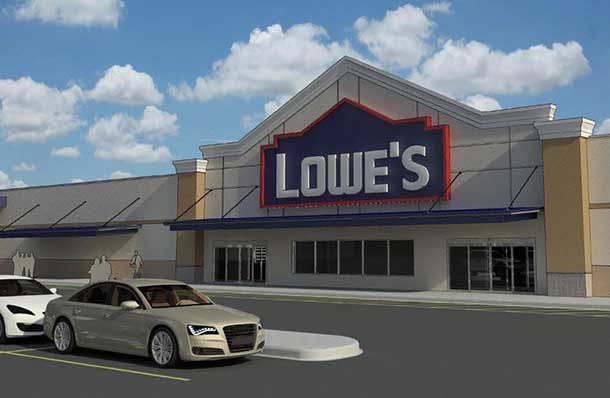
THUNDER BAY – BUSINESS – Traditional ways of doing retail business are changing. From the hands of consumers, armed with their smartphones, retailing is changing. Online shopping, emerging technology, and changing shopping patterns are making it increasingly important for retailers to keep up.
From their smartphones, in your store, a consumer can quickly price check other retailers, and online shops.
Building on expectations is key, as demonstrated by the failure of Target in Canada. Consumers were expecting a similar shopping experience to the American Target stores. When that didn’t happen, they stayed away.
Moving forward, especially for smaller retailers and businesses means realizing that the marketplace is far larger than the local geographic area.
In Thunder Bay, many consumers shop online.
Doubt that?
Take a trip to Ryden’s Border Store and look at the warehouse. It is full of packages destined for Thunder Bay homes, and businesses.
For people living in northern communities, shopping at local stores will see high prices. Shopping online, or going out of the community for shopping, either via winter roads or by air is increasingly common.
Shopping locally is often now seen as sitting in front of your computer.

2014 ushered in a wave of major changes in retailing that will continue to shape commerce in the years ahead. Yet, many of the big stories and trends all come back to one core takeaway finds a new Walker Sands study: technology continues to shape the future of retail.
The second annual Future of Retail Study, from Walker Sands, analyzes how technology has forever changed consumer shopping habits and looks at the technology trends that retailers should be getting on their short- and long-term radars.
The survey of U.S. consumers on their online shopping habits will help retail technology companies anticipate consumer behavior in 2015 and beyond. Some of the biggest challenges faced by retailers today are noted here:
- Consumers are shopping online more frequently and purchasing a broader selection of products, but Amazon is still the go-to website for most categories
- Free shipping is more important than fast shipping and could incentivize consumers to shop online for products they do not traditionally buy online, such as groceries and luxury goods
- Most consumers still carry some cash, but they’re using it less frequently and only for select purchases such as street vendors and cabs
- The introduction of Apple Pay has accelerated the shift to mobile payments, but consumers still have security and privacy concerns about using their phones at the cash register
- As commerce and technology continue to increasingly intersect, consumers will embrace emerging technology such as drones and virtual reality shopping
The current survey found that 28% of consumers shop online at least once per week, a 27% increase from a year ago. 68% of consumers now shop online at least once per month, compared to 62% in 2013. The findings indicate that consumers have become more comfortable ordering online and incorporating web purchases more frequently into their online shopping routines.
Amazon remains the go-to online shopping destination with 96% of consumers saying they have made a purchase on the e-commerce giant’s website in the past year. The preference for the Amazon experience is also clear when looking at some of the most popular product categories, including electronics, books, household goods and consumer packaged goods. Retailers, meanwhile, hold a clear advantage in clothing and specialty categories such as luxury items, sporting goods and office supplies.
- Four out of 10 consumers are open to purchasing any type of product online from either retailers or third party websites like Amazon, but they trust Amazon more than retailers in 10 out of 11 product categories
In addition to shopping online more frequently and across more product categories, consumers have also become more willing to buy expensive items on the web without seeing them first. 76% of consumers now say they would spend more than $100 online on a product without seeing it first, up from 70% in 2013. And, nearly three times as many consumers (27% compared to 10%) would purchase a product costing more than $1,000 without seeing it first if free returns were offered.
While it might be tough for retailers to absorb the cost, says the report, as free returns rank as the No. 2 incentive for getting consumers to shop more online, up from No. 3 a year ago. Easier online returns (48%), confidence in payment security (51%), and same-day shipping (42%), are also all up in importance from 2013. Free shipping (83%) continues to be the top reason consumers say they would shop more online.
40% of consumers say they have used a mobile payment application in the past year, says the report, up from just 8% in 2013. Among those who have used mobile payments in the past year, 45% have used Google Wallet, 41% have used a banking payment app such as Chase QuickPay, and one third have used a retailer payment app such as Starbucks.
While only 4% of survey respondents have tried Apple Pay in the past year, 18% of consumers say the introduction of Apple Pay makes them more likely to make a purchase on their phone in the near future. The number jumps to 36% when looking only at Apple smartphone owners, but even 16% of Windows phone owners and 8% of Android owners say the introduction of Apple Pay makes them more likely to pay with their phones.
Although Apple has the potential to help mobile payments go mainstream in 2015 by raising awareness and setting industry standards, the transition might not be smooth. Apple, and other leaders in the mobile payment space, will need to overcome several consumer concerns before smartphone payments compete with the convenience of credit cards. Currently, only 20% of consumers have no hesitation about using mobile payment service
Some additional key findings found in the report:
The shift to mobile payments has accelerated over the past year, with Apple Pay raising awareness and increasing consumer willingness to use smartphones at the point of sale.
- Eight out of 10 consumers have some hesitancy about using mobile payment services, with the biggest concerns being security (57%,) and privacy (48%)
- Although 56% of consumers rank cash as the most secure form of payment, only 11% have paid for something in cash in the past day, compared to 27% last year. 59% of consumers have $20 or less in their wallets
- Nearly one in five shoppers (19%) have been the victim of fraudulent purchases as a result of a security breach at a major retailer, but consumers still rank credit cards (22%) and debit cards (16%) as the second and third most secure forms of payment behind cash
Emerging technology, such as drones and virtual reality, will bring new opportunities and challenges for retailers.
- 66% of consumers say they expect to receive their first drone-delivered package in the next five years, and four out of five shoppers say drone delivery within the hour would make them more likely to order online from a retailer
- Almost 80% of consumers are willing to pay for drone delivery, with 48% saying they would pay at least $5
- 35% of consumers say they would shop more online if they were able to try on a product virtually using a product like Oculus Rift, and 63% said they expect it to impact their shopping experience in the future
As we move into 2015, the future of retail will continue to come into sharper focus. While there’s no telling what surprises this year will bring, the findings of this year’s Walker Sands’ Future of Retail Study provide insights into consumer shopping behavior that retailers can use to shape their strategy and investments for years to come, concludes the report.
For more detail from the report, including charts and graphs, please visit Walker Sands here.






